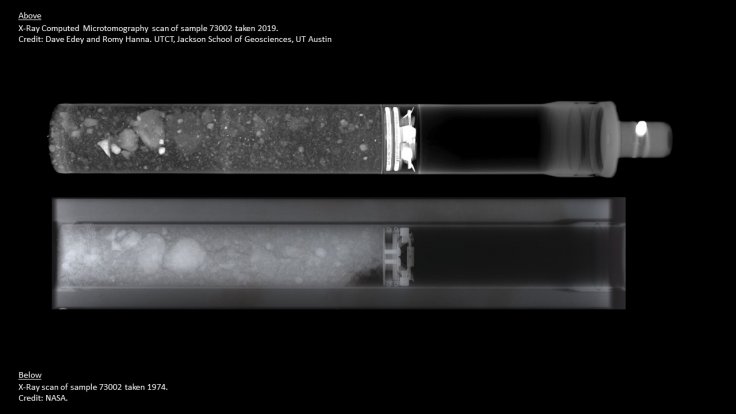After studying the lunar samples collected through NASA's Apollo missions, a team of scientists revealed that the Moon contains traces of Theia. This is the name of the Mars-sized object believed to have hit Earth billions of years ago.
The giant-impact hypothesis indicates that Theia struck Earth around 4.5 billion years ago. The planetary collision sent huge chunks of Theia and Earth into space. Many of these chunks coalesced and formed into a natural satellite that is now known as the Moon.
Reanalyzing Apollo's Lunar Samples

This theory has been serving as the leading explanation regarding the presence of a natural satellite orbiting Earth. Recently, through a new study published in the journal Nature, new evidence was presented to support this theory. The scientists were able to come up with their findings after carrying out a reanalysis of lunar samples, which were collected and brought back to Earth by crewed missions from NASA's Apollo program.
"This model was capable of accounting for the then-recent observations from samples returned by the Apollo missions, which included the Moon's low iron content relative to Earth, depletion in volatiles and enrichment in refractory elements while avoiding most of the pitfalls of previous lunar origin theories," the researchers stated.

Finding Traces Of Theia On The Moon
For the study, the scientists used a modified standard isotope analysis designed to measure oxygen isotopes. By comparing the samples from the Moon to those on Earth, the scientists learned that the two sets have different oxygen isotopes. For the scientists, the results strongly indicate that Theia may have original formed from the outer regions of the Solar System before colliding with Earth and creating the Moon.
In addition, their findings help clarify one of the main issues of the giant-impact hypothesis. This indicates that if the Moon is mainly composed of Theia's chunks, then its oxygen isotopes should be different from those of Earth.
"Our findings imply that the distinct oxygen isotope compositions of Theia and Earth were not completely homogenized by the Moon-forming impact, thus providing quantitative evidence that Theia could have formed farther from the Sun than did Earth," the researchers stated in their study.









